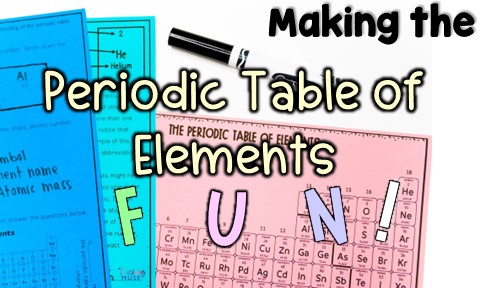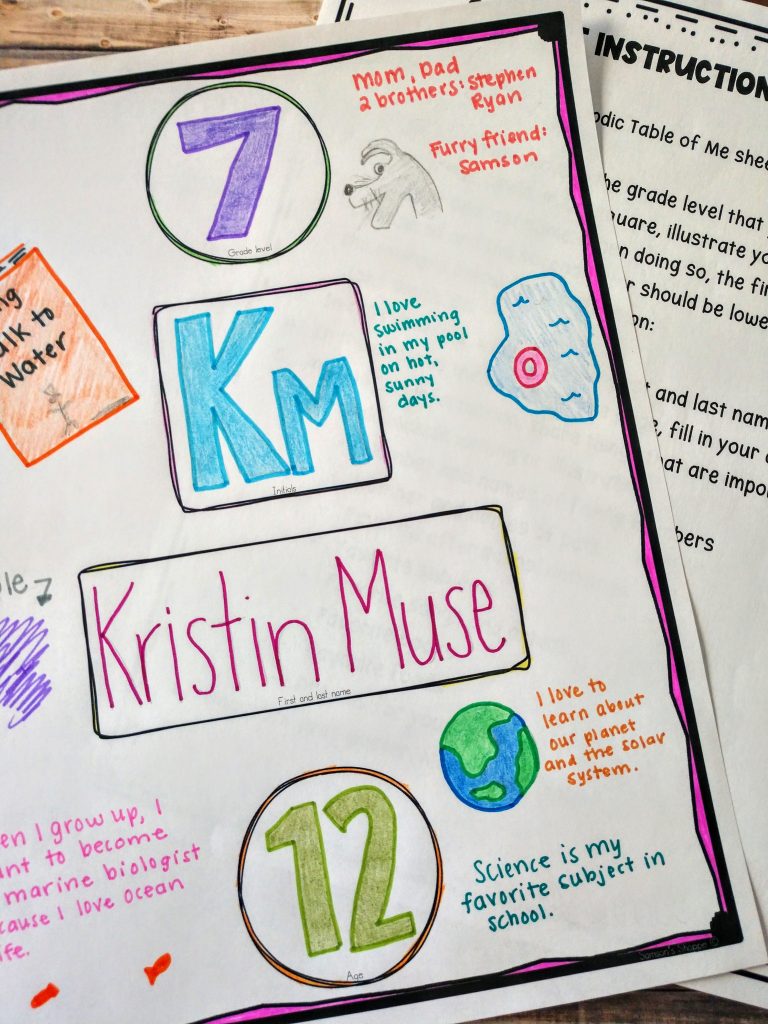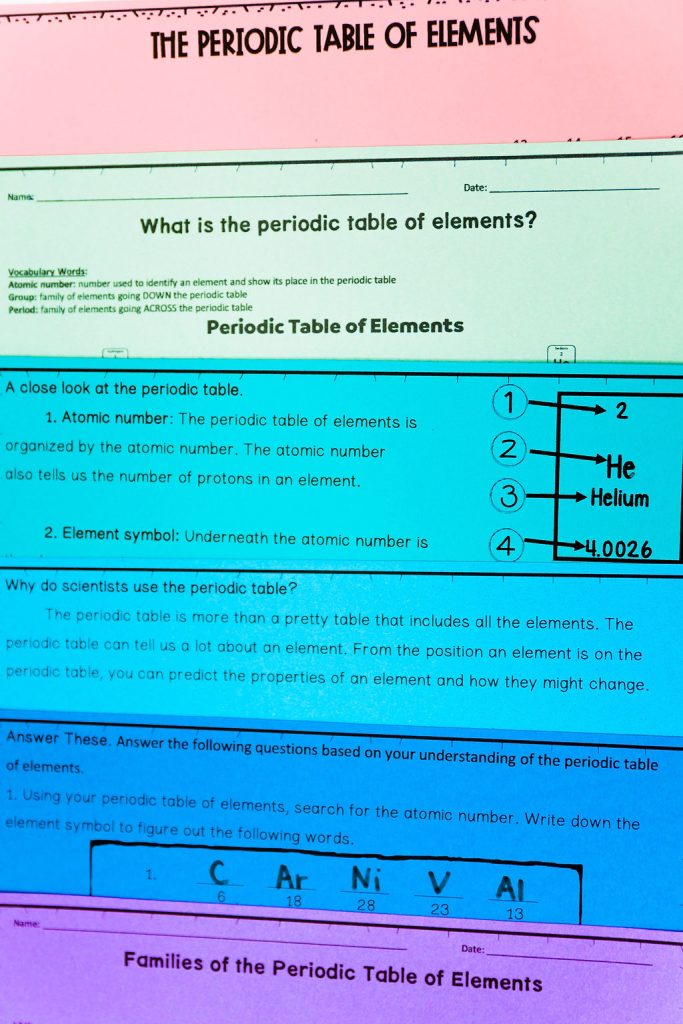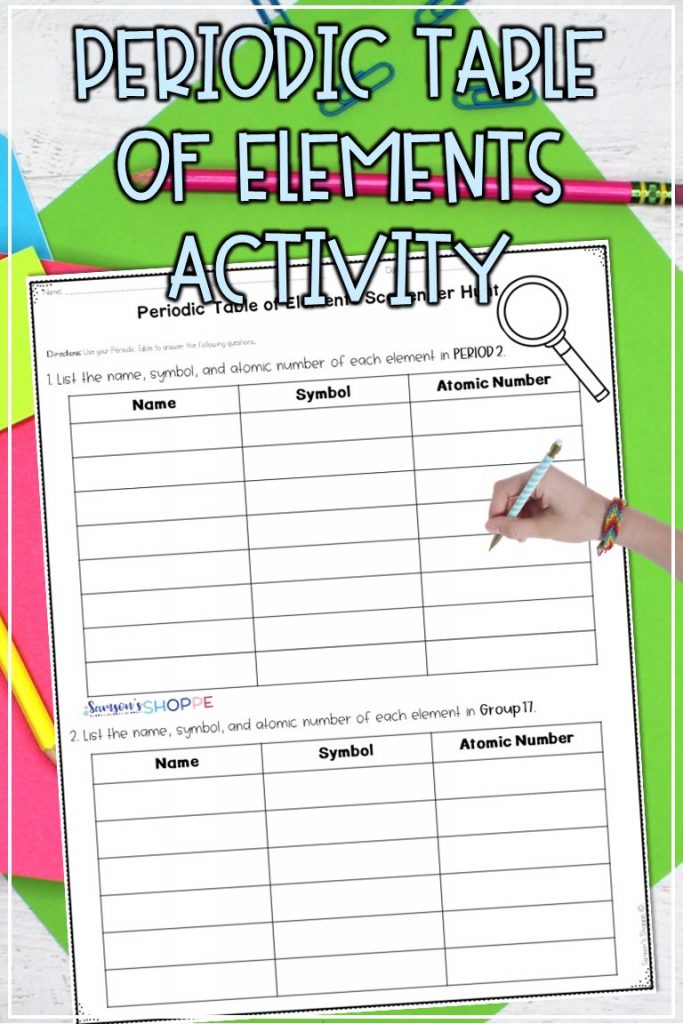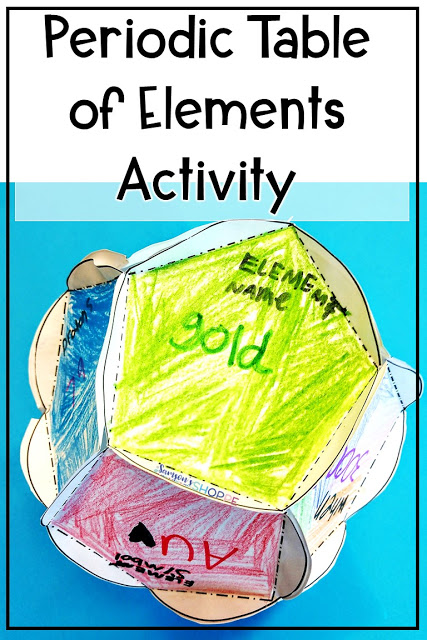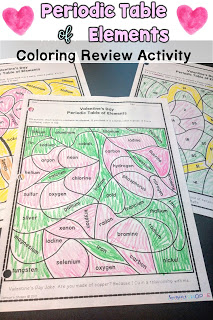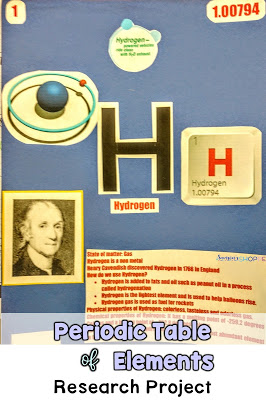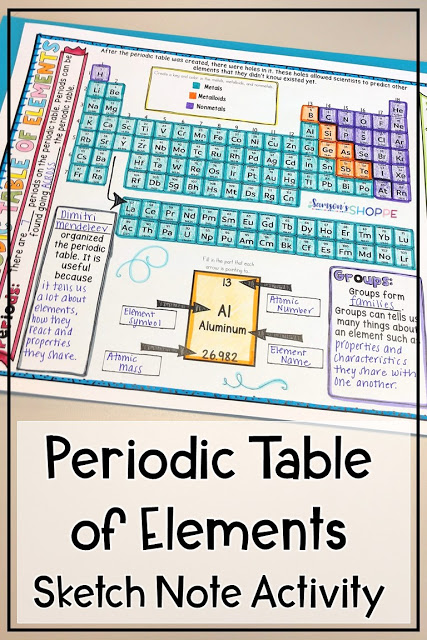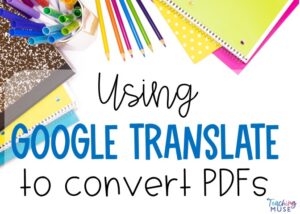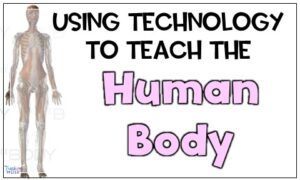Science teachers, are you struggling with how to make the periodic table of elements an engaging and fun unit for your students?
Learn how to teach a unit using these strategies to motivate and excite your students.
Cement background knowledge into students on the first day of school. Forgoing traditional getting to know you activities, have students complete the “Elements of Me” activity.
It’s a fun take on the periodic table of elements, but instead students will add in things about themselves, such as
- an “atomic number” (grade level),
- element symbol (initials),
- element name (first and last name), and
- element mass (age).
This introduction activity will look awesome hanging in your classroom for back-to-school night, and when students start learning about the table later in the year, come back to visit these activities.
Start your unit by tackling important vocabulary terms. This is important because most of these terms are entirely unknown to students.
Unlike other vocabulary terms, you really can’t use context clues to figure out what most of these words mean.
So choose terms students will encounter multiple times throughout the unit that are meaningful to their understanding of the periodic table. Important terms could include:
- element,
- chemical symbol,
- universal,
- group,
- period, and
- periodic table of elements.
Videos are simple to understand and fun to watch, so you might want to include a Brainpop or Flocabulary one.
Next, continue to layer knowledge using science reading texts.
Text should include vocabulary and short, manageable paragraphs that are easy to understand. Including checkpoint questions and overall comprehension questions will help to summarize their learning.
Science texts can be completed
- in class,
- in small groups, or
- independently.
- Sometimes you may want to assign them as homework.
Fun Periodic Table Review Activities
Now comes the fun stuff!
Periodic Table of Elements Review Activities
Tips for the periodic table:
- Print one in color and laminate it for small classes.
- Allow students to use this for the unit and then collect it at the end of the unit for the following year.
- Put the periodic table in a safe place to use next year.
- groups,
- then periods,
- then both.
They will also have to
- search by the name of the element.
- find atomic numbers
- metals and nonmetals.
- Dimitri Mendeleev,
- searching for elements,
- why it is useful and
- researching elements.
Give students time to complete the assignments or use them as a great project or homework assignment.
Integrating Holidays
Project
Finally, complete the unit with a project by researching one of the elements.
Students are given a guideline of what they need to include and will complete their element tile.
This activity allows students to practice their research skills. Even in the older grades, students ask questions like, “How do I find this?”
- atomic number,
- mass,
- element name, and
- symbol.
Research skills are needed to determine who, when, and where the element was discovered, the chemical and physical properties, its uses, and fun facts.
Get immediate access to these sketch notes!
Subscribe to my newsletter to use this resource with your students TODAY!
Welcome! Now check your email (including SPAM folders) to confirm your subscription.

